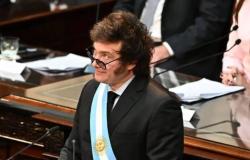Going to medical school has become one of those torturous processes for Brazilian students who, almost always, try once, twice, three times and fail to win the tough battle for a place in the sun in what is the most sought after course in the country. In public institutions, on average 66 candidates compete for a place, a competition that reaches an extraordinary number of almost 300 aspirants fighting for a single portfolio at the State University of Campinas, which has the highest national competition. The fight is attenuated in the private sector circuit, but it is the figures that are surprising — from 10,000 reais per month and upwards. Amidst the obstacles, a growing group of young people has been finding less expensive and good quality alternatives in neighboring nations, such as Paraguay and, even more so, Argentina, where the influx of students of Brazilian nationality has multiplied fivefold since 2017, reaching a contingent of 20,000, according to a recent government survey. “We hear Portuguese all over the campus”, says Renata Mendonça, 24, from Sergipe, who studies at the University of Buenos Aires (UBA) and clarifies: “In the classroom, the rule is only Spanish”.
The level of education is attractive, as the course offered at some universities abroad, especially in Argentina, is ahead of what is offered by excellent Brazilian universities in the ranking of the best in Latin America. This is the case of UBA and Nacional de La Plata, both public, in higher positions than the University of Brasília and the Federal University of São Paulo, for example. There is nothing there, nor in the Paraguayan system, like the entrance exam or the Enem — places are released according to demand, all you need to do is present the documentation and take a Spanish test that requires intermediate knowledge. Migration is facilitated by the Mercosur agreement, which provides, without excessive bureaucracy, temporary residence of up to two years (later, it needs to be converted into permanent) — a path that President Javier Milei has warned that he intends to make difficult by taxing foreigners, but , for now, it remained in the speech. “Demand continues to rise, it is advantageous to come here”, says Monique Lemos, who has turned the phenomenon into a business: she owns a consultancy that precisely helps Brazilians to complete their paperwork and settle in the country.
The fingerprints of the green and yellow gang can be seen in various sectors of everyday life, such as fashion (never before have so many feet worn Havaianas on the Buenos Aires university scene) and the snack bar menu, in which empanadas give way to bestsellers such as coxinha, cheese bread, açaí and brigadeiro. The cultural broth, which includes parties fueled by funk and drinking beer, also shakes up higher education in the brothers, less accustomed to such informal events, as well as the associations that come together around sports, the “athletics”, with a large number of locals joining. Sharing a taste for football helps. “These are ways to satisfy your nostalgia and feel a little bit of Brazil in Argentina”, says the president of one of these sports groups, Nathalia Lopes, 27, who left Brasília to study at Barceló University, another in Buenos Aires.
Between university expenses (in the case of private universities) and the costs of living away from home, the bill is worth it: the estimate for those who live in the Argentine capital is around 3,500 reais per month, while on the Paraguayan route it costs around 2,500 reais. “Brazilians already represent an incredible 90% of medical students here,” Eduardo Franco, director of the University of the Pacific (UP), which has the quality seal from the Paraguayan National Higher Education Assessment Agency, told VEJA. Right on the border with Mato Grosso do Sul, it is still far from the São Paulo home of Itallo Lemos, 24 years old, who ended up getting there on the recommendation of two cousins, who graduated from that campus. “It’s a sacrifice, yes, but it’s so worth it to have this degree”, ponders Itallo. Although it is not common, the Brazilian invasion occasionally causes manifestations of xenophobia to emerge. “I heard of students who left the room crying after the teacher said that the person didn’t even know Spanish, imagine medicine”, laments Maria Clara Viegas, 22 years old, from the National University of La Plata from Rio de Janeiro. Most, however, feel comfortable. “I was welcomed, I noticed their interest in getting to know our culture”, says Renata Mendonça, from UBA, who had tried the university entrance exam in Brazil three times before deciding to emigrate.
Continues after advertising
The steps that follow graduation are, in general, shrouded in doubt — whether or not to remain on foreign soil is the big question mark that hangs over this class. Right away, those who return must overcome a barrier, the National Exam for the Revalidation of Medical Diplomas (Revalida), a test known for its high complexity, a prerequisite for practicing the profession in Brazil. Although the CVs are similar, many people don’t pass the first time. “The test is essential to ensure that only well-trained people reach the market”, says Julio Braga, from the Federal Council of Medicine. After graduating from Bolivia, the first of the South American countries to join the map of Brazilians looking for straws, in the 1980s, Alessandra Lima, 28 years old, immersed herself in books to face Revalida. “It wasn’t easy, but today I’m a proud doctor, working in my city”, says she, who lives in Manaus. While the expansion of vacancies here is happening slowly, it is across borders that a portion of Brazilians become doctors.
Published in VEJA on April 26, 2024, issue no. 2890
Tags: wave Brazilians seeking medical schools
--






